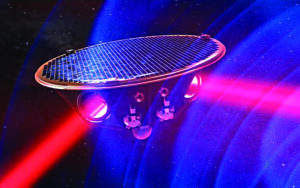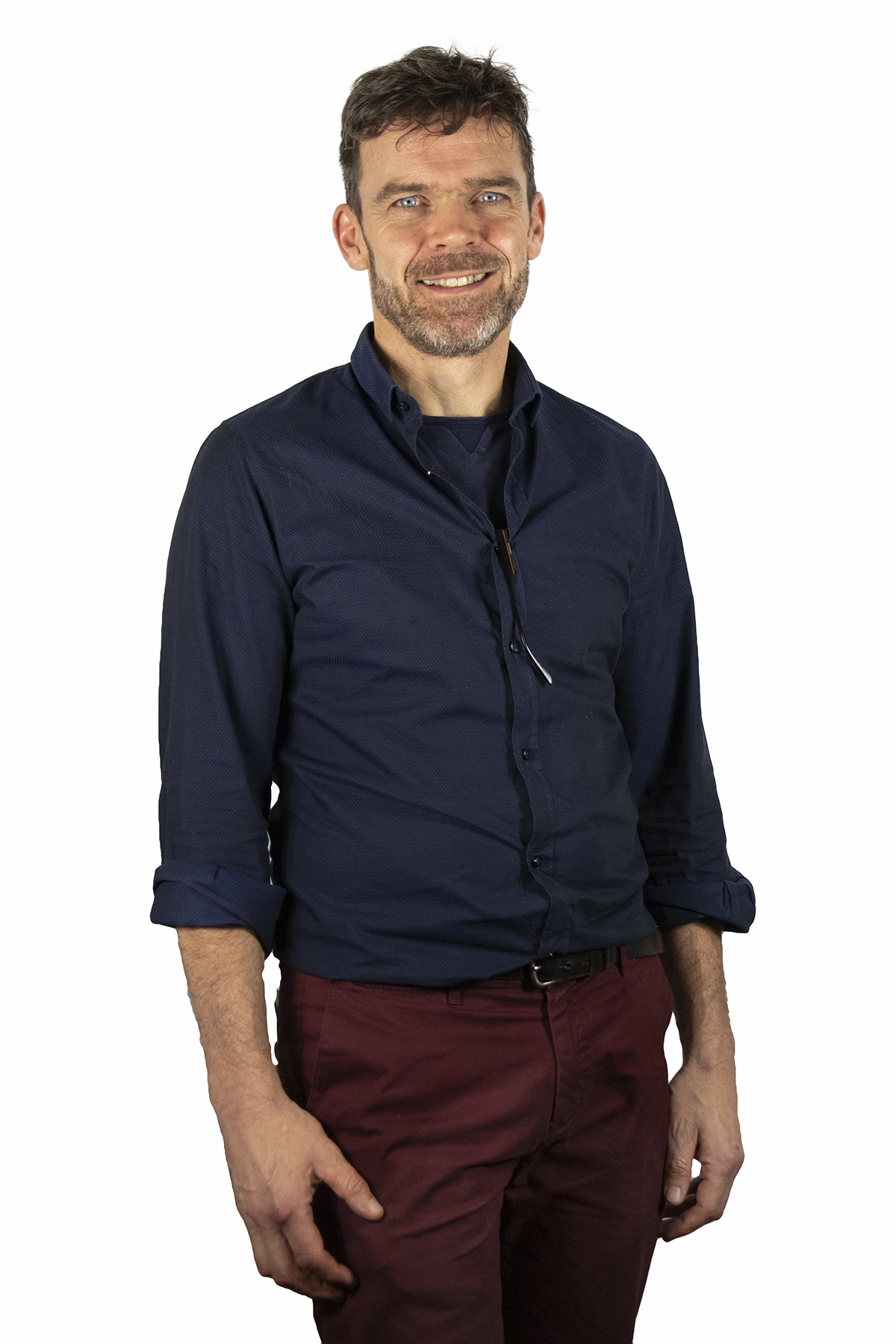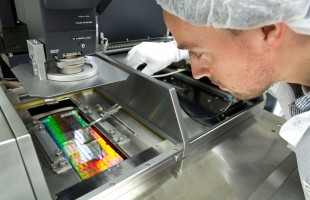The European Space Agency ESA has officially adopted gravitational wave detector LISA as one of its “large class” missions. The Netherlands plays a major role in the development of the hardware and software, including through the Detector R&D section at Nikhef.
The Laser Interferometer Space Antenna (LISA) is the first detector to measure gravitational waves in space. From space, LISA detects longer waves than ground-based detectors such as LIGO and Virgo, opening a new window on all kinds of exotic phenomena.

LISA consists of three spacecraft orbiting the sun behind the Earth. They detect gravitational waves from different sources in the universe by continuously measuring their mutual distances with laser beams.
These are ripples in the structure of space created by exotic cosmic events – such as colliding black holes or the Big Bang – similar to an oil tanker creating waves in the ocean. The first-ever space detector for gravitational waves, LISA will be ESA’s third L-class mission, making Europe the world leader in the field.
Baby black holes
At 2.5 million kilometers, LISA extends its arms much farther than ground-based detectors ever will. This makes it receptive to longer wavelengths from larger space objects. It allows LISA to “listen” for the first time to, say, the Big Bang or baby black holes from the early universe. Or to the chaotic paths stars take as they are swallowed up in the complex geometry around a supermassive black hole, like a practical test of Einstein’s General Theory of Relativity.
‘It is great to see that LISA has arrived at this final stage,’ says Gijs Nelemans (SRON/Radboud). ‘The first plans for such a completely new type of space mission are already 30 years old.’ Elena Maria Rossi (Leiden University) adds, ‘We are stepping into a totally new field of science. Ground-based detectors already let us listen to the near universe. LISA gives us hearing at much lower frequencies so that for the first time we can hear the largest and most distant events in the universe.
LISA’s eyes
Dutch scientists have long been involved in the LISA project. A Dutch consortium of SRON, Nikhef, Radboud, Leiden University, UvA, Utrecht University, TNO, Maastricht University and RUG has received an NWO Roadmap grant in 2023, led by SRON, to work on the Dutch hardware contribution.
They are building the photodiodes (LISA’s “eyes”), software, targeting mechanism and associated readout electronics. These are designed at the limit of what is technologically possible.
Aiming is extremely precise because each laser must hit a lens at a distance of 2.5 million kilometers. Light takes eight seconds to do that. By comparison, if a dime falls off the Eiffel Tower, a laser from the Netherlands must aim exactly where that dime will be in eight seconds.
Photodiodes
The photodiodes don’t have it much easier. They must detect laser beams of originally 1 watt, like a table lamp, but which after their journey have been toned down to 250 picoWatts, i.e. over a billion times weaker.
Software development is complex even for a space mission. The LISA project is eminently a synergy between engineers, scientists and data scientists. The software must distinguish between the multitude of gravitational waves from all possible directions that continuously vibrate the spacecraft at different frequencies and amplitudes.
Within the life cycle of an ESA mission, the Mission Adoption Review is the formal end of the research phase, in which the specifications in the detector design are established and the readiness of the technology is assessed. Following LISA’s successful Mission Adoption Review, ESA’s Science Program Committee has now approved the transition from the research phase to the implementation phase. This step is called Mission Adoption. The implementation phase will last from now until launch around 2035.
Source: press release SRON

